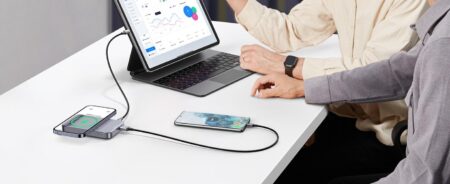Lifelong education is becoming increasingly important as our society moves away from factory work. We now work with technology and data, and this shift has increased the responsibilities of educators. Global data creation and consumption are expected to exceed 149 zettabytes by 2024. No matter where you teach, you must learn to collect and handle data. While data is valuable, too much data is cumbersome, and the incorrect data is useless. With the correct data gathering approach, you can save time and avoid mistakes.
What is data collection?
With established proven methodologies, data collection is described as gathering precise insights for the study. You can use the obtained data to evaluate a researcher’s hypothesis. Regardless of the research field, data collecting is usually the first and most critical phase. Depending on the information needed, data gathering methods vary by field of study. The most important goal of data collecting is to acquire information-rich and reliable data for statistical analysis and data-driven research conclusions.
Why collect data?
Here are a few benefits and applications of data collection:
- To get the most value for money, you need to concentrate your efforts and resources on the things that will make the most significant difference.
- It aids in the better analysis of trends in customer opinions and behavior.
- Using the information you’ve gathered, you’ll be able to make faster, more informed judgments.
- It gives you the ability to divide your target market into distinct segments and then create targeted marketing tactics for each one.
- Feedback data helps you solve problems and enhance your products and services where they are most needed.
- It contributes to better customer interactions.
Two types of data collection
There’s something you should know before diving into data collection methods. Primary data collection and secondary data collection are the two basic categories under which data collection is conducted.
- Primary Data Collection: Acquiring raw data for a given study is known as primary data collection. There are two primary data collection methods:
- Qualitative Research Method: Qualitative research relies heavily on intangible factors like emotions, opinions, and sentiments to be effective. Open-ended feedback, such as a survey form you give to clients, is an excellent example of a qualitative data collection strategy.
- Quantitative Method: It relies on numbers and mathematical computations to help you conclude instead of qualitative data collection approaches. Questions with a single answer require calculation, such as those that use the terms mean, median, and mode. Polls are a well-known type of this data collection. You’re primarily concerned with the data they provide, which you use to draw your conclusions and make judgments.
- Secondary Data Collection: Data is gathered from a secondary source rather than the original when collecting secondary data. You can get this type of information in already-published internet portals, books, and journals. When compared to other methods, secondary data collection is the more convenient and less expensive choice.
Top six data collection methods
- Interviews: The main aim of an interview is to acquire helpful information for a research project. An interview is a face-to-face dialogue between two people. In-depth interviews come in three flavors: structured, semi-structured, and unstructured, each with unique characteristics.
- Questionnaires and surveys: Surveys and questionnaires are both the primary data collection tools. Questionnaires are a collection of typed or written questions sent to a sample of study participants for feedback. The survey is returned to the researcher when completed so that you can record the results. Pilot studies should be conducted with questionnaires filled out by professionals to assess the questions’ or procedures’ weaknesses.
For data collection, two survey methods are commonly used: online and offline. In online surveys, internet-enabled devices such as mobile phones, PCs, and tablets are utilized. One can use this online form builder to create an effective survey form to quickly collect data. Please send them to your audience by email, or post them on your website or social media. Instead of relying on an internet connection, you can carry out offline surveys without it. Among offline survey types, paper-based surveys are the most widely used. Offline surveys like Formplus, on the other hand, can be completed using a mobile device even if there is no internet connection available. An online-offline survey can be conducted offline but must be submitted via the internet.
- Observations: Only a few questions arise when performing an observation. The researcher’s knowledge can also be based on their observation evaluations, although this does not mean it is always skewed. You can’t always take note of changes that occur in real-time with other methods, but observation helps you do so. You may, for example, see how your audience’s mood changes in real-time. The vital way to get data for testing a hypothesis is through observation. It’s not always a good idea because it’s situational and can lead to skewed results.
- Documents and records: You may be able to gather a significant quantity of information without having to make any inquiries. Existing data is used in research based on documents and records. A few examples of this type of investigation are attendance records, meeting minutes, and financial records. Because you’re primarily using previously completed research, using documents and records is both efficient and cost-effective. On the other hand, documents and records can be imperfect because the researcher controls the findings.
- Focus groups: The participants in this study provide comments and replies to the open-ended questions posed to them. An interview-survey-observation mix is what focus groups are like. Instead of obtaining individual viewpoints, the primary goal of this data collection approach is to get communal ones. The group has a discussion and comes up with a consensus position.
- Oral histories: It is the process of compiling, preserving, and interpreting historical material from the perspectives of those who lived through or witnessed a particular event. When it comes to oral history, the focus is almost always on a specific event or phenomenon.
Endnote
Keeping these methods in mind will assist you in making an informed decision about the data collection method to choose. Thanks to recent technological advancements, researchers now have access to new solid tools, which have reshaped how they work with their subjects.









